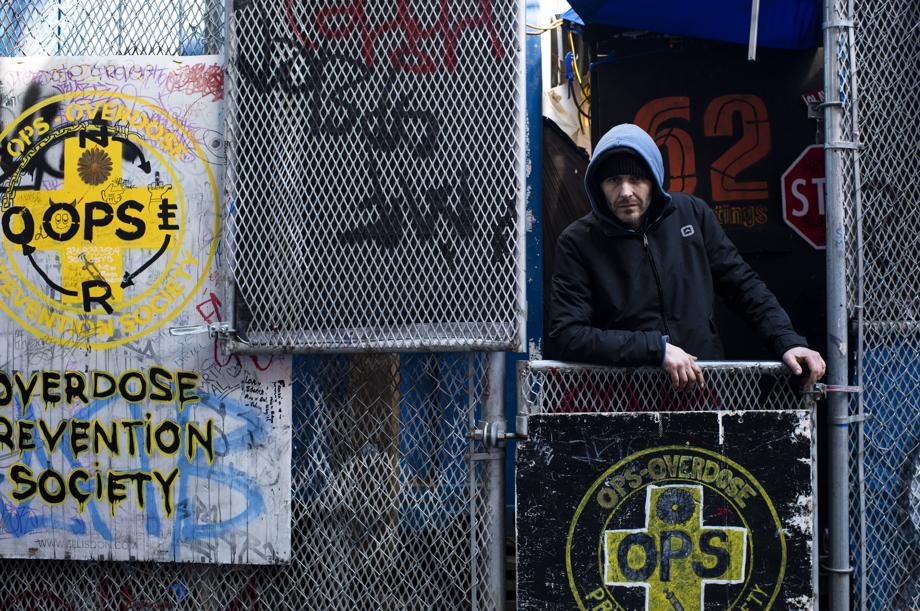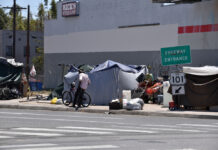As homelessness continues to rise and issues with drug use and overdose expand, an increasingly contentious debate is brewing around social assistance programs built on the concept of harm reduction. Overdose Prevention Sites (OPS), sometimes also known as “safe consumption sites,” have become a focal point of this debate, particularly surrounding policies regarding public spaces.
In the face of this debate, a team of researchers from the British Columbia Centre on Substance Use has conducted a groundbreaking study. Michelle Olding, Jade Boyd, Thomas Kerr, and Ryan McNeil, the study’s authors, collected experiences from people using an OPS in Vancouver, Canada, and examined the impact of these sites on public spaces, as well as the ensuing tensions. These tensions arise from public policies and practices that often treat unhoused people as a source of urban blight and decay, pushing them out of prime public space.
The researchers navigate the intricate “geographies of survival” — a concept that encapsulates how people who use drugs and are vulnerably housed employ public spaces as a lifeline for their existence and how urban landscapes and policies shape these survival strategies. They explain:
“Rising homelessness [in North American urban areas] has been accompanied in many cities by urban control strategies that seek to regulate the presence and activities of homeless people in public space,” the authors explain.
“Research has extensively documented the proliferation of laws criminalizing sheltering, sleeping, and panhandling in public spaces…surveillance tools such as CCTV and community policing …and hostile architecture (e.g., segmented benches, spikes) designed to deter sheltering and sleeping… Much of this work foregrounds the exclusionary and punitive functions of these practices…in which unhoused people are treated as a source of urban blight and decay to be evicted from prime public space.”
 In Vancouver, an epicenter of the overdose crisis that mirrors what’s happening across Canada and the U.S., there are four operational OPSs.
In Vancouver, an epicenter of the overdose crisis that mirrors what’s happening across Canada and the U.S., there are four operational OPSs.
“An estimated 32,632 deaths in Canada between January 2016 and June 2022, with mortality rates highest in the province of British Columbia”, wherein Vancouver is the largest city. Vancouver also has four operational OPSs, giving a breadth of difference for data triangulation. The OPS is particularly concerning to many citizens as it is not as simple as handing out needles, or performing tests of drugs or STIs, at a specific location, but instead includes the actual use of drugs on site, under the care of experts and health professionals.
“OPS provide low-barrier spaces for people to use illicit drugs under the monitoring of staff trained to provide life-saving care in the event of an overdose,” the authors explain.
While hailed by activists, the site is concerning to citizens who have been taught specific ideas about drugs that are often centered in racist, “revanchist,” and xenophobic ideologies, including the belief that certain drugs contain an “endogenous addictiveness” where once the drug is sued, the person is automatically and permanently addicted.
Unhoused people often use the sites, and due to the inclusion of “drop-in centers,” where people can “hang out” on-site to congregate and commune while also accessing services beyond those regarding drugs, the space outside the OPS is also utilized by those same people. This leads to contention between the users of the OPS and those passing by and through the space outside the OPS.
The authors of the study note:
“Further research is needed to understand how service operators and frontline staff manage the tensions that can emerge when service users attempt to use the space beyond its primary overdose response function.”
Drawing on two years of ethnographic fieldwork in Vancouver-based OPS, the study situates these multiple uses of OPS within the survival geographies of PWUD. The researchers found that while OPS accommodated, important survival needs such as mutual aid, sheltering, and income generation, they also posed operational challenges as service volumes increased.
In response, a practice the researchers termed “spatial triage” emerged – a pragmatic set of rules and procedures that managed these challenges but disproportionately impeded OPS use by women, Indigenous, and unhoused PWUD.
The researchers used this experiential data to understand better how the needs of OPS users drive the programming choices and priorities of those running the sites and how those running the sites navigate those frictions with the community at large.
Multiple Uses of OPS within Geographies of Survival
“OPS were central to geographies of survival as they represented one of few publicly accessible spaces that welcomed vulnerably housed PWUD. Importantly, sites operated with low-barrier policies…that improved program accessibility and facilitated drug use practices more closely aligned with how drugs were used in non-intervention settings.”
Making the sites more aligned with the experience of use when PWUD are not at an intervention site allows the service user to be more comfortable, increasing the probability of (continued) use.
Additionally, “service users further emphasized that OPS were situated strategically in spaces they already frequented to source drugs, access cheap food, make money, find emergency shelter, and socialize.”
This includes the reality that OPSs are best placed in areas where there is already existing activity of drug sourcing and use. The site is, as often called out by critics, a space where people do purchase drugs for use, as they can easily use the proximity to the safe injection process once they “score.”
The people using the site, as well as those who run the site, are welcoming of this as the reality of the drug market is accepted, and the site is not for limiting use as much as ensuring safe use for those who are not currently choosing to eliminate their use of drugs.
The sites also offer employment opportunities to PWUD, as they are one of the few places that offer low-barrier access to employment, such as not performing pre-employment drug screening. They also offer heating, cooling, electricity to do things like charge “phones and other devices,” running water (for shower usage and other purposes), and can offer shelter from inclement weather, as many homeless shelters have a zero-tolerance policy regarding the use of drugs or alcohol during, or even before, the utilization of these sites. Instead, they expect users of the shelters to arrive sober and remain so during their stay, limiting the usefulness for PWUD, who may suffer (sometimes life-threatening) withdrawal if they stay at the shelter.
Enacting Spatial Triage in OPS
“To ensure people had timely access to this life-saving service, OPS enacted multiple techniques of spatial triage to expedite the movement of service users through the OPS. The bluntest instruments were time limits for injection and smoking spaces, which ranged from 5 min (for smoking in a bathroom) to 30 min (for an injection booth).”
By enforcing expeditious use of these areas, the site can make them more readily available for people arriving at the site to better ensure they do not leave and choose to use outside of the OPS, which may lead to complications, such as life-threatening overdose.
“While OPS were situated strategically within drug selling locations, drug selling could not legally occur within OPS… As required under service contracts, OPS established rules early on prohibiting drug sales or the exchange of any money on site. To operationalize these rules and assert control over sites, OPS displaced any potential drug sales from the OPS itself. Most participants agreed with rules placed around money exchange and drug sales at OPS, and developed spatial strategies to adhere to these rules such as stepping outside to complete drug sales or delaying payment until after they finished using the site.”
Balancing the reality of the drug market that makes an OPS necessary and the legal restrictions around that market has been a tightrope for OPS leaders. They can better walk this tightrope by working with the community and communicating clearly and effectively. PWUD and OPS staff are both aware of the realities of criminalized drug use and by accepting these realities, the sites are better at ensuring they are meeting the community’s needs.
“OPS operators and staff became ambivalently enlisted in managing the visibility of homelessness to ensure the service’s political acceptability within neighborhoods that were wealthier…. rapidly gentrifying… At one site, for example, workers expressed concerns about residents of a new low-barrier shelter using the sidewalk outside of the OPS during daytime hours when the shelter was closed.”
This reality of an OPS reverts to those contentions about the “proper use” of public space. Further, it highlights the difference between expectations from society at large and the “on the ground” reality of North American urban centers. To shelter the site’s users from these policies, especially from unwanted interventions by law enforcement, the workers and leaders of OPS often have to enforce some of these “proper use” ideas.
In the case above, the staff had to work with the community to ensure that the space outside the site was not used when the space was not open, as the staff would not be present to hide and intervene from intervention from the police in the case other members of the area were to complain or object to the ongoing reality of the drug market.
Navigating Harms and Inequitable Impacts of Spatial Triage
Since PWUD’s access to and use of public space within the city was inequitably distributed along axes of gender, race, and class, so too were the harms of spatial triage.
The researchers observed multiple instances of spatial triage unwittingly deterring unhoused service users from accessing these spaces. For example, the following fieldnote excerpt described a man attempting to enter an OPS with a cart of personal possessions:
“A man pops his head into the OPS and asks the front desk clerk if another man, who has been standing outside for a bit, can bring his cart in with him while he uses the injection room. The clerk shakes their head and says that he cannot bring his cart as they must keep the space clean and pathways clear in case of an overdose. The man tries to advocate for the man and his cart, emphasizing to the staff that the other man is unhoused and doesn’t have someone to watch his stuff. The man with the cart overhears this all from his position in the alleyway and, looking demoralized, begins to walk away, dragging the cart behind him.”
These restrictions, done many times in the best interest of the users (such as in this case when the spatial restrictions were attempting to ensure easy access to emergency services in the case of an overdose), can lead to the exact people who need the services being blocked from accessing them. The site workers also described cases of discriminatory observation of users based on race, particularly noting that Indigenous users were subject to more interventions by police than non-Indigenous users. Additionally, the space was gendered in specific ways:
“Women’s use of injection space was frequently characterized as more problematic than that of men, with emphasis put on activities associated with femininity such as using injection tables to put on make-up or re-arrange items in a purse.”
The number of objects brought into the site was also larger for women, leading to conflicts between users and staff. Gendered power dynamics also came into play with staff members who were women reporting difficulties in enforcing restrictions and rules upon users who were men, either due to cultural or physical power imbalances.
Since the study was performed in a specific geographical location (Vancouver, Canada), there are limitations in generalizing the data presented. The experiences of OPS users in other areas, including in the United States, could differ from those in the study.
Policies regarding public space can differ depending on urban location as well. Additionally, the experiential differences may vary along with demographic differences in other places. However, there are similar precedents for these contentious discussions in other areas.
For example, a current battle is ongoing between community organizers and local officials in Pittsburgh, PA, over the continued existence of a low-barrier shelter located downtown. While the shelter was originally designated to be open over the winter months (November through March), the length was extended due to an additional shelter program being utilized beyond expected capacity.
In other words, the situation and number of unhoused people in Pittsburgh were under-reported. Once the new low-barrier facility was opened (2nd Avenue Commons), the Smithfield Shelter (once the Winter Shelter) was forced to stay open due to the limited number of placements in the facility that was supposed to replace the Smithfield Street shelter.
Now that the shelter has been open beyond its expected timeline, members of the downtown business community have expressed concerns regarding issues similar to what was seen by the researchers of OPSs in Vancouver. These include drug use, overdoses, harm reduction practices, and also an increase in conflicts, assaults, and robberies occurring outside the shelter. Jack Cohen, a business owner whose shop is close to the shelter, states, “A lot of our customers don’t want to walk past them… They make them leave like at 6 or 7 in the morning, and they just hang out there [and] wait till they open again.” Cohen was a part of a group of business owners who met with officials to try and get the shelter closed.
While the research is not exactly generalizable to every geographic location, the underlying themes seem familiar across settings. Questions regarding access to public spaces, including “hostile architecture,” such as spiked grounds, segmented benches, and even greenspace landscaping, are of debate in the United Kingdom. Philadelphia recently had a battle regarding opening an OPS within New Kensington, regarded as the largest open-air market for drugs in the United States.
And the much-heralded “housing first model,” which began in the conservative state of Utah, has recently come under scrutiny by Republican legislators.
This research points to a need to understand the human experiences of these battles and policies about who is regarded as part of the public and how we best serve those with the greatest need. Watchdog Twitter user @hostiledesign describes the situation:
“The hostility toward the homeless impacts not only them but the disabled, elderly, wheelchair users, visually impaired, etc… We have such disdain for them existing in our spaces that we’re willing to make it worse for everyone instead of coming up with solutions.”
****
Olding, M., Boyd, J., Kerr, T., & McNeil, R. (2023). “We just don’t have the space for it”: Geographies of survival and spatial triage in overdose prevention sites. Health & Place, 83, 103067 (Link)














